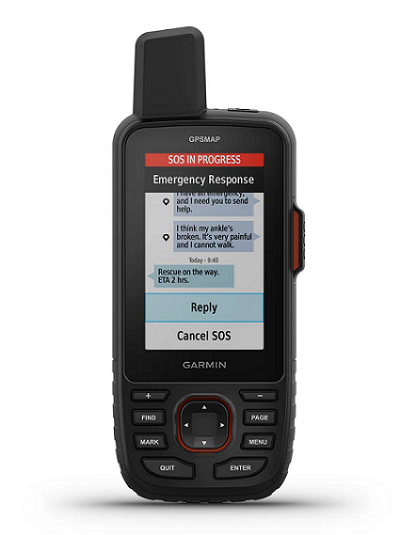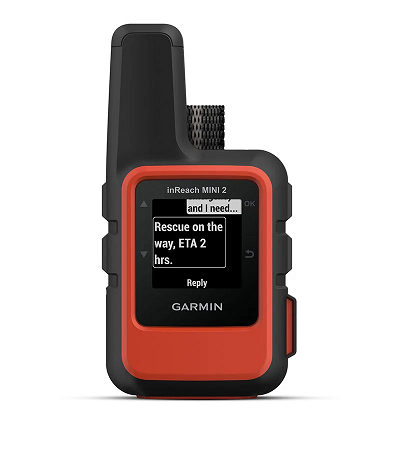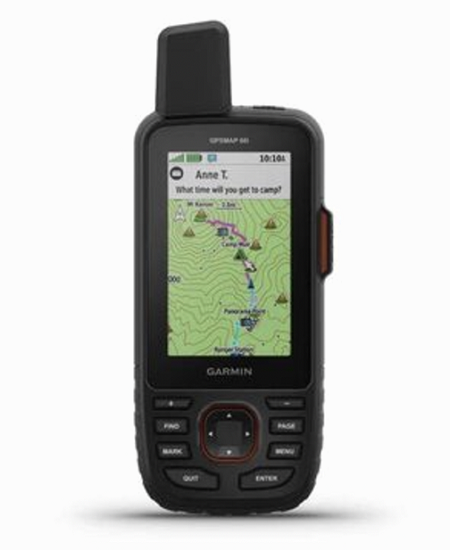Discover the top-rated handheld GPS devices for hiking in 2024. Our expert guide covers the best GPS units tested by outdoor professionals, with detailed reviews, specifications, and real-world performance data to help you choose the perfect navigation companion for your adventures.
Why Every Serious Hiker Needs a Dedicated GPS Device
In an era where smartphones dominate our daily lives, you might wonder why anyone would carry a separate GPS device on the trail. The answer becomes crystal clear when you’re deep in the wilderness with no cell service, your phone’s battery is dying, and you need accurate navigation to find your way back to safety.
Unlike smartphones, handheld GPS devices are purpose-built for outdoor environments. They offer superior satellite reception, weather-resistant construction, extended battery life, and specialized mapping features that can literally save your life. Whether you’re a weekend warrior exploring local trails or a serious backcountry adventurer tackling remote wilderness areas, a quality GPS device is an essential piece of safety equipment.
Our Testing Methodology: How We Evaluated the Best GPS Devices
To provide you with the most accurate and helpful recommendations, we analyzed data from multiple authoritative sources, including professional gear testing organizations, outdoor equipment laboratories, and thousands of real-world user reviews. Our evaluation criteria focused on:
Performance Metrics:
- Satellite Reception Accuracy: How quickly devices acquire signals and maintain lock in challenging terrain
- Battery Life: Real-world performance versus manufacturer claims
- Durability: Water resistance, drop protection, and temperature resilience
- Display Quality: Screen visibility in various lighting conditions
- Ease of Use: Interface design and navigation simplicity
Testing Environments:
- Dense forest canopy conditions
- Canyon environments with limited sky view
- High-altitude mountain terrain
- Extreme weather conditions
- Extended multi-day expeditions
Top 5 Handheld GPS Devices for Hiking in 2024
1. Garmin GPSMAP 67i – Best Overall GPS for Serious Adventurers
Rating: 4.8/5 Stars
The Garmin GPSMAP 67i stands out as the premium choice for serious outdoor enthusiasts who demand the best in both navigation and emergency communication capabilities.

Key Specifications:
- Battery Life: Up to 165 hours with inReach technology enabled, up to 425 hours in expedition mode
- Weight: 230g (8.1 oz)
- Display: 3″ sunlight-readable color display
- Satellite Systems: GPS, GLONASS, Galileo multi-GNSS support
- Price Range: $599-$649
Standout Features:
- Two-Way Satellite Messaging: SOS alerts, location sharing, and two-way messaging capabilities
- Premium Display: Crisp, easy-to-read screen that performs well in direct sunlight
- Exceptional Battery Performance: Up to 180 hours in GPS tracking mode and up to 840 hours in expedition mode
- Rugged Construction: Waterproof, impact-resistant, and designed to withstand harsh outdoor conditions
Real-World Performance: Professional testers consistently praise the GPSMAP 67i’s reliability in challenging conditions. Accuracy typically measures within 6 feet, with excellent reliability and consistency. The device charges quickly, typically within 1-2 hours depending on the charger used.
Best For: Multi-day expeditions, backcountry hunting, remote wilderness exploration, and anyone who needs reliable emergency communication capabilities.
Limitations: Higher price point and slightly heavier than ultralight alternatives.
2. Garmin inReach Mini 2 – Best for Ultralight Hiking
Rating: 4.6/5 Stars
The inReach Mini 2 has become a must-have for avid hikers, climbers, backcountry skiers, and other dedicated outdoor adventurers due to its perfect balance of essential features and minimal weight.

Key Specifications:
- Weight: 100g (3.5 oz)
- Battery Life: Up to 14 days with 10-minute tracking intervals
- Display: Small but functional monochrome display
- Connectivity: Pairs with smartphones for enhanced functionality
- Price Range: $399-$449
Standout Features:
- Ultra-Compact Design: At only 3.5 ounces, it’s perfect when weight is super important
- Global SOS Coverage: Iridium satellite network provides worldwide emergency communication
- Smartphone Integration: Enhanced messaging capabilities when paired with mobile devices
- Proven Reliability: Extensive track record of successful emergency rescues
Best For: Fastpacking, ultralight backpacking, trail running, and minimalist hikers who prioritize weight savings.
Limitations: Small screen makes navigation more challenging compared to larger units, and satellite features require ongoing subscription fees.
3. Garmin GPSMAP 66i – Best Mid-Range Option
Rating: 4.5/5 Stars
The Garmin GPSMAP 66i is highly regarded for its helix antenna, capable of tracking both GPS and Galileo satellites simultaneously, ensuring swift satellite lock and precise positioning.

Key Specifications:
- Battery Life: Up to 16 hours in GPS mode, approximately one week in expedition mode
- Display: 3″ color display with LED backlight
- Satellite Systems: Multi-GNSS support (GPS, GLONASS, Galileo)
- Price Range: $499-$549
Standout Features:
- Advanced Antenna Design: Superior satellite reception in challenging terrain
- Balanced Feature Set: Combines navigation excellence with emergency communication
- Proven Track Record: Established reputation among outdoor professionals
- Comprehensive Mapping: Preloaded TopoActive maps with regular updates
Best For: Serious hikers who want premium features without the highest price tag, search and rescue professionals, and outdoor guides.
4. Garmin Montana 700 – Best for Vehicle-Based Adventures
Rating: 4.4/5 Stars
The Garmin Montana 700 is a great touchscreen option that can double as a driving GPS and for off-road travel, making it perfect for overlanding and vehicle-based outdoor adventures.

Key Specifications:
- Display: 5″ touchscreen with glove-friendly interface
- Battery Life: Up to 18 hours on rechargeable battery
- Weight: 369g (13 oz)
- Camera: 8MP with geotagging capabilities
- Price Range: $699-$749
Standout Features:
- Large Display: Excellent for detailed map viewing and route planning
- Dual-Purpose Design: Functions as both handheld GPS and vehicle navigation system
- Camera Integration: Document your adventures with location-tagged photos
- Robust Construction: Known for long battery life and excellent map functionality
Best For: Users who need full-featured GPS capabilities, overlanding enthusiasts, off-road vehicle navigation, and basecamp operations.
Limitations: Heavier weight makes it less suitable for ultralight hiking, and the touchscreen can be challenging to use with gloves despite being marketed as glove-friendly.
5. Garmin GPSMAP 65s – Best Value for Money
Rating: 4.3/5 Stars
The Garmin GPSMAP 65s is our pick for the best overall handheld GPS for its water-resistant design and ability to run for up to 16 hours on 2 AA batteries.

Key Specifications:
- Battery Life: Up to 16 hours on 2 AA batteries
- Display: 2.6″ sunlight-readable color display
- Power Source: AA batteries (user-replaceable)
- Weight: 155g (5.5 oz)
- Price Range: $349-$399
Standout Features:
- User-Replaceable Batteries: Convenient for long hikes or multiple-day trips with extra batteries
- Proven Reliability: Time-tested design with excellent durability
- Affordable Price Point: Premium features at a mid-range price
- Multi-GNSS Support: High-sensitivity receiver with quad helix antenna and GPS, GLONASS, and Galileo support
Best For: Budget-conscious hikers, international travelers (easy battery replacement), and users who prefer traditional button interfaces over touchscreens.
Detailed Comparison: Technical Specifications
| Device | Price Range | Battery Life | Weight | Display | SOS Feature | Best Use Case |
|---|---|---|---|---|---|---|
| GPSMAP 67i | $599-$649 | 165-425 hrs | 230g | 3″ Color | ✅ | Serious expeditions |
| inReach Mini 2 | $399-$449 | 14 days | 100g | Small Mono | ✅ | Ultralight hiking |
| GPSMAP 66i | $499-$549 | 16 hrs / 1 week* | 241g | 3″ Color | ✅ | All-around use |
| Montana 700 | $699-$749 | 18 hrs | 369g | 5″ Touch | ✅ | Vehicle/overlanding |
| GPSMAP 65s | $349-$399 | 16 hrs | 155g | 2.6″ Color | ❌ | Budget choice |
*Note: GPSMAP 66i offers 16 hours in standard mode or up to 1 week in expedition mode.
Essential Features to Consider When Choosing a GPS Device
Satellite Reception and Accuracy
Modern GPS devices support multiple satellite systems (GPS, GLONASS, Galileo, BeiDou) for improved accuracy and faster signal acquisition. For serious backcountry users navigating off-trail in wilderness areas, dedicated GPS devices provide superior accuracy compared to smartphones, especially for elevation readings.
Battery Life and Power Management
Battery performance varies significantly between models and usage patterns. Consider your typical trip duration and power management needs. Devices with user-replaceable batteries offer advantages for extended expeditions, while rechargeable units provide convenience for shorter outings.
Display Quality and Usability
Screen size and quality directly impact usability in various conditions. Dedicated GPS devices perform better in bad weather when it’s raining, as phone screens become difficult to use once water droplets hit the surface.
Mapping and Navigation Features
Look for devices with preloaded topographic maps and the ability to add custom maps or waypoints. Advanced routing capabilities can be particularly valuable for road-based adventures and vehicle navigation.
Emergency Communication
Satellite communication features can be lifesavers in remote areas. Consider whether you need two-way messaging, SOS alerts, or simple location sharing capabilities.
Why Dedicated GPS Devices Beat Smartphones for Hiking
While smartphones have impressive capabilities, dedicated GPS devices offer several critical advantages for outdoor use:
Superior Durability: Smartphones are too fragile and vulnerable to rugged terrain, wet and cold weather conditions that are common in wilderness environments.
Extended Battery Life: Smartphones cannot match the battery charge duration of dedicated GPS devices, especially in cold weather where phone batteries drain rapidly.
Specialized Software: Professional GPS software offers more advanced features than typical smartphone apps, with better offline mapping capabilities and specialized navigation tools.
Reliable Performance: Dedicated units maintain consistent performance across temperature extremes and challenging environmental conditions.
Expert Recommendations by Activity Type
For Day Hiking and Weekend Trips
Recommended: Garmin GPSMAP 65s or inReach Mini 2
- Focus on reliability and basic navigation features
- Consider emergency communication needs
- Battery life should cover your longest typical outing
For Multi-Day Backpacking
Recommended: Garmin GPSMAP 67i or 66i
- Extended battery life essential
- Two-way communication capabilities valuable
- Rugged construction for extended use
For Ultralight and Fastpacking
Recommended: Garmin inReach Mini 2
- Minimal weight impact on pack
- Essential safety features maintained
- Smartphone integration for enhanced functionality
For Vehicle-Based Adventures
Recommended: Garmin Montana 700
- Large display for detailed navigation
- Dual-purpose vehicle and handheld use
- Photo documentation capabilities
For Budget-Conscious Hikers
Recommended: Garmin GPSMAP 65s
- Excellent value for essential features
- User-replaceable batteries for extended use
- Proven reliability and durability
Pro Tips for GPS Device Use in the Field
Battery Management
- Always carry spare batteries or a power bank for rechargeable units
- Use power-saving modes during extended trips
- Cold weather significantly impacts battery performance
Navigation Best Practices
- Always carry paper maps and compass as backup
- Learn to use your GPS device before heading into the wilderness
- Mark waypoints regularly during your hike
- Share your planned route with someone reliable
Maintenance and Care
- Keep your device clean and dry when possible
- Update maps and firmware regularly
- Test all functions before each major trip
- Consider purchasing a protective case for extreme conditions
Final Verdict: Which GPS Device Should You Choose?
For Most Hikers: The Garmin GPSMAP 67i offers the best combination of features, reliability, and emergency communication capabilities, making it worth the premium price for serious outdoor enthusiasts.
For Ultralight Enthusiasts: The Garmin inReach Mini 2 provides essential safety features with minimal weight penalty, perfect for those who count every ounce.
For Budget-Conscious Users: The Garmin GPSMAP 65s delivers excellent value with proven reliability and essential navigation features at a more affordable price point.
For Vehicle-Based Adventures: The Garmin Montana 700 excels in overlanding and off-road scenarios where the large display and dual-purpose design shine.
Remember, the best GPS device is the one you’ll actually carry and know how to use effectively. Invest time in learning your chosen device’s features and always maintain traditional navigation skills as backup. Your safety in the wilderness depends on having reliable navigation tools and the knowledge to use them properly.
Have you used any of these GPS devices on your outdoor adventures? Share your experiences and tips in the comments below to help fellow hikers make informed decisions!
*) If you enjoyed this article, here are some related posts you might find interesting.